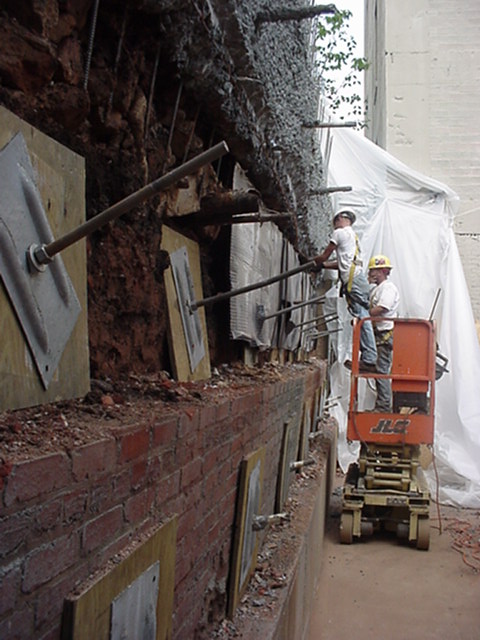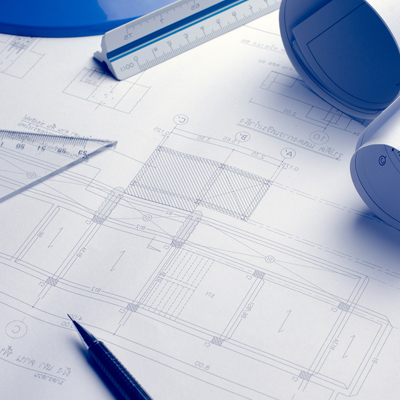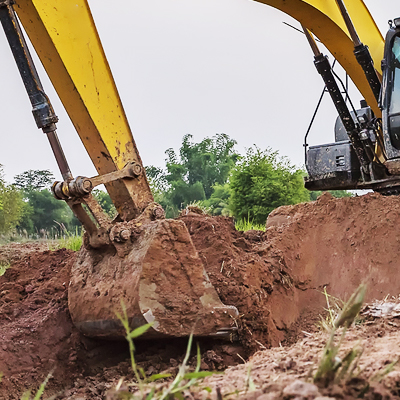Soil Nailing
| Click image to view more |
To determine if soil nailing is the most appropriate technique for earth retention, four main points are reviewed:
-
Existing ground conditions
- Favorable conditions include hard packed fine-grained soils including hard clays, silty clays, sandy clays, and sandy silts; dense soils with some cohesion including sand and gravels; glacial soil; and evenly weathered rock.
- Unfavorable conditions include soils with a high groundwater table, soft fine-grained soils, soils with cobbles and boulders, highly corrosive soils, loose granular soils, and unevenly weathered rock. Areas that are subject to prolonged freezing temperatures, or climates with frequent freeze/thaw cycles are also not ideal candidates for soil nailing.
- Pros and cons of soil nail site conditions: location, future anticipated construction, and proximity of slope to other structures
- Pros and cons of other earth retention techniques
- Cost analysis of soil nails versus other earth retention techniques



